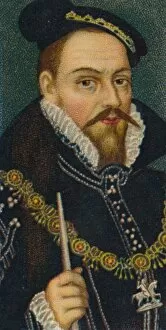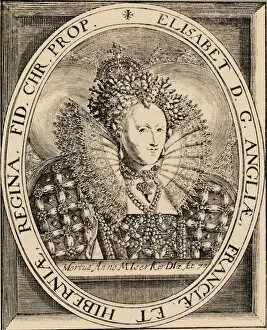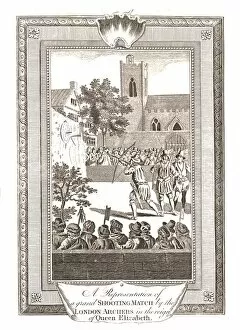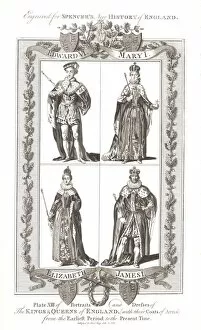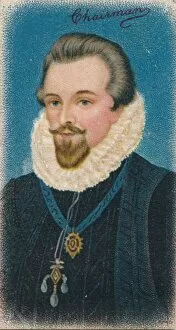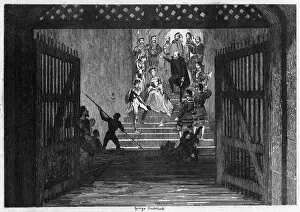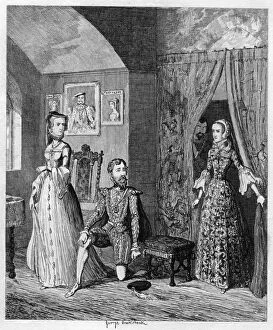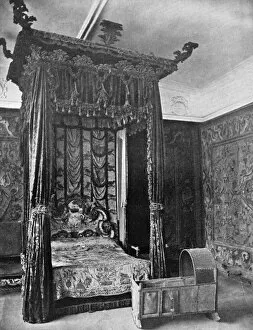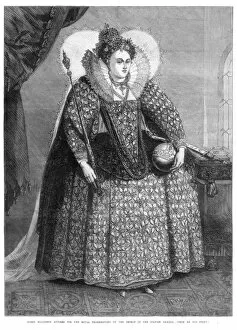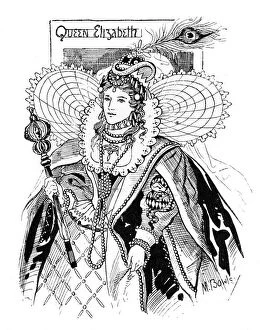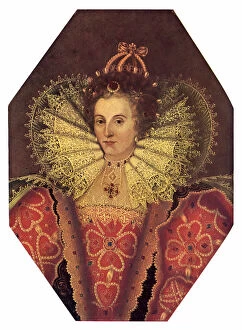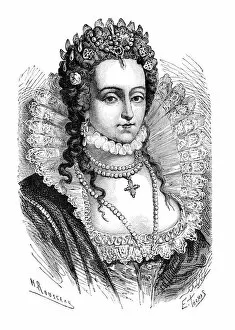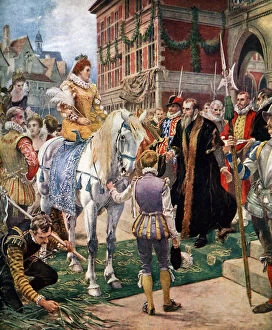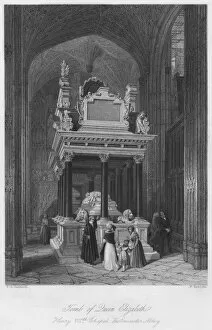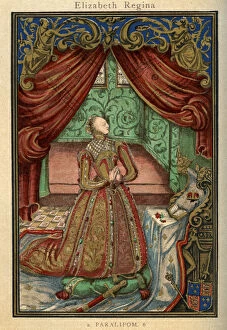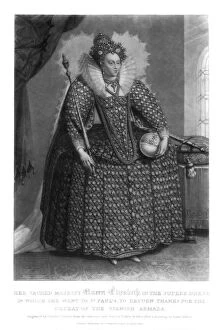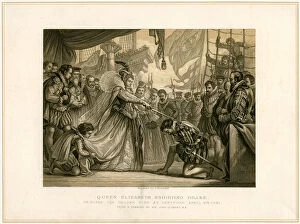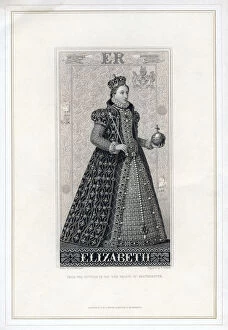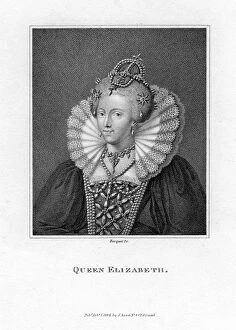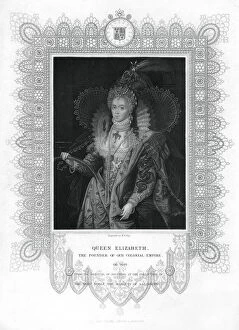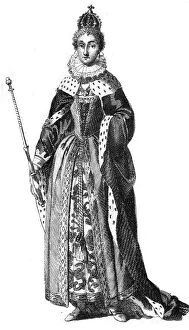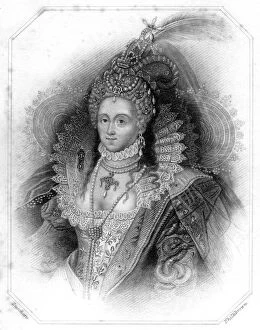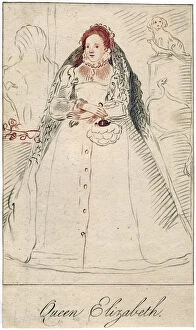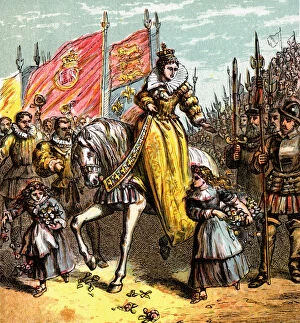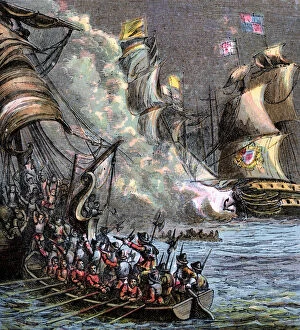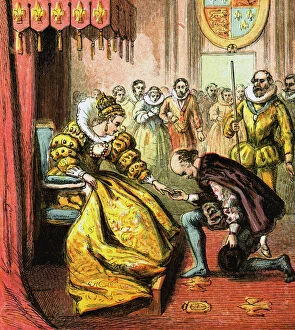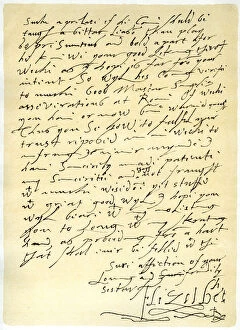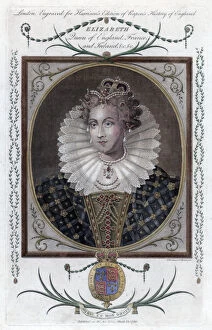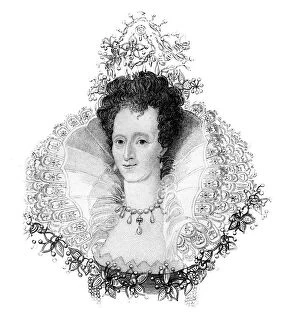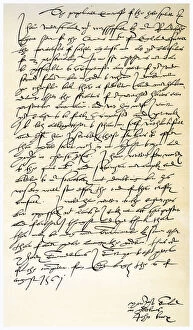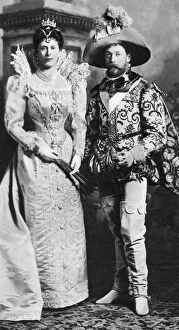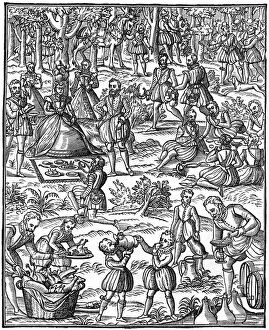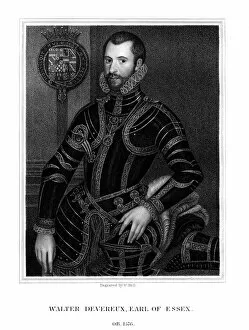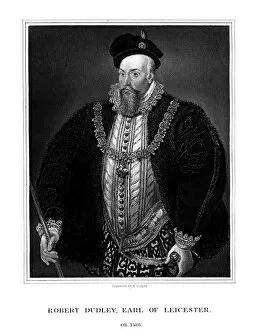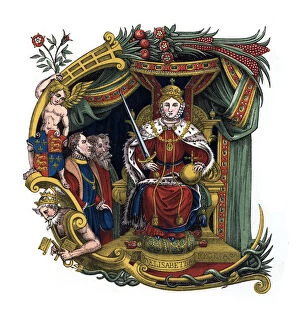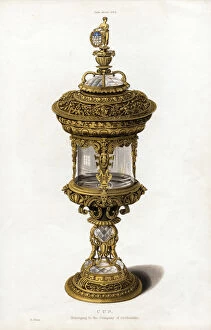Elizabeth Tudor Collection (page 4)
"Elizabeth Tudor: The Iconic Queen of England and Ireland" Step into the world of Elizabeth I
For sale as Licensed Images
Choose your image, Select your licence and Download the media
"Elizabeth Tudor: The Iconic Queen of England and Ireland" Step into the world of Elizabeth I, the formidable monarch who ruled over England and Ireland during the late 16th century. With her regal presence captured in stunning portraits by artists like George Gower and Nicholas Hilliard, Queen Elizabeth's power and elegance are immortalized for generations to admire. In "The Ermine Portrait, " painted in 1585, we witness Queen Elizabeth's majestic aura as she dons a luxurious gown adorned with pearls. Her piercing gaze reveals a woman of intelligence and determination, ready to face any challenge that comes her way. As Princess Elizabeth, later known as Queen Elizabeth I, is depicted in an enchanting portrait from c1547. Even at a young age, her potential radiates through her eyes – a glimpse into the future reign that would shape history forever. Accompanied by influential figures such as Lord Howard of Effingham and Sir P. Sidney, it becomes evident that Queen Elizabeth was not only admired but also respected by those around her. These men stood beside their queen with loyalty and admiration for her leadership skills. An alabaster statue further commemorates this iconic ruler – capturing both her beauty and strength in stone form. It serves as a testament to the lasting impact she had on English history. Queen Elizabeth's vibrant spirit shines through even more vividly when we see her dancing with the Earl of Leicester in 1581. This rare moment captures the queen's joyous side amidst all the responsibilities she carried on her shoulders. Not only did Queen Elizabeth possess gracefulness; she also wielded power symbolically through objects like The Lord Mayors Sword of State and Pearl Sword – artifacts that represented authority during her reign. Amongst other notable individuals portrayed alongside this remarkable queen are Sir Edmund Anderson and Sir P. Sidney – both esteemed figures who played significant roles within Elizabethan society. Elizabeth Tudor remains an enduring symbol of female empowerment and resilience.

